Pictured Above: WINTER FORAGE. In an average weather year, the Doans never have to supplement their herd and they’re able to leave about 50% of the cover crop litter behind to help boost soil health. They still harvest 600-800 round bales of perennial forage crops a year, however, in case a big blizzard hits.
Check The Specs...
NAME: Jerry Doan
FARM: Black Leg Ranch
LOCATION: McKenzie, North Dakota
YEARS NO-TILLING: 25
ACRES: 5,000 crops, 6,000 range
CROPS: Winter Wheat, Spring Wheat, Corn, Sunflowers, Soybeans, Forages, Cover crops and Cattle
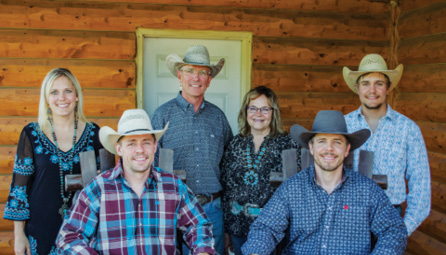
The Doan Family. (l-r) Shanda Morgan, Jeremy Doan, Jerry Doan, Renae Doan, Jay Doan and Jayce Doan.
Some of the soils I helped farm as a child in southwestern North Dakota are probably somewhere in South Dakota now. I grew up in the era of wheat and summer fallow. A lot of the ground around here is very sandy and marginal. Did it ever blow when we were tilling. I remember as a kid getting sent with a disc or a drag to try and make it stop blowing. It seemed so futile, and it was.
At the time my family didn’t know any better. That’s just how things were done. We’d been doing them that way a long time.
My great grandfather came down from Canada and homesteaded what’s now Black Leg Ranch just east of the Missouri River near Bismarck in 1882. Who knows what it looked like then, but I imagine it was pretty similar to the abundant grassy plains Lewis and Clark described in their journals as they ventured west.
Over years of farming with a plow, the soil degraded, organic matter gradually declined and we saw a lot of sand blowouts form. As the 4th generation to farm and ranch on the land, I was continuing that tradition until I finally saw a better path.
In the 1990s, I was the chairman of the North Dakota state board of ag research and education. I sat in on a lot of meetings talking about no-till, which was very new in our area at the time. It took longer than I care to admit for the message to sink in, but one day it finally clicked.
We started no-tilling our crops, which include spring wheat, corn, soybeans and sometimes sunflowers. It was one of those moments when you stop and say, ‘Wow, what took us so long to figure this out?’
Our marginal, rolling ground flourished with no-till. Before, we could get a decent forage crop, but it was difficult to grow a good cash crop. No-till helped save moisture, which made all of our crops better.
Since making the switch, we no longer have many erosion issues, our water infiltration has greatly improved and we’re boosting our overall soil health. This is all working to put more natural nitrogen (N) and phosphorus (P) back in the soil.
As we moved forward with no-till, and eventually cover crops, we’ve been able to improve production, decrease input costs and make our ranch more stable for the next generations.
Sound Soil
I have a degree in animal science from North Dakota State University. As part of that degree I had to take a soils class. It was all about using traditional soil tests to determine how much synthetic fertility you needed to apply to maximize yields.
That’s all fine and good, but that’s certainly not what we embrace now. We’re far more interested in soil organic matter, soil life and regenerating our land so it can provide for itself, not depend on us for expensive inputs.
We’re also interested in being profitable. My wife, Renae, and I have three sons and a daughter, Jeremy, Jay, Jayce and Shanda, who have all gone out in the world and decided, ultimately, to return to the ranch. To support everyone and future generations, we need to be sustainable and diversify in many ways.
In all our endeavors — crops, livestock, hunting and agritourism — success seems to be rooted in the health of our soil.
No-till certainly put our soil on the right track, but cover crops and livestock have moved the mark most significantly. Our soil organic matter is increasing, soil biology is thriving and soils are buffered from temperature extremes;keeping the biology working to release nutrients to our growing crops.
Adding livestock made a lot of sense to me. Going back to Lewis and Clark, they discovered here a beautiful, robust, diversified prairie system. One of the reasons it did so well is because massive herds of buffalo came through tromping down the vegetation and leaving manure and urine behind. They then wouldn’t return to the area again for a couple of years.
This got me thinking, we really needed to start mingling our livestock and cropping systems if we wanted to even begin to return to that high level of production the untouched wilderness used to achieve.
Counting on Cattle
We run 600 head of commercial Angus cows and custom graze an additional 2,400 in summer. I wanted to start grazing my cows on cover crops, but like most things there can be a bit of a learning curve. I was fortunate in I had some great people around.
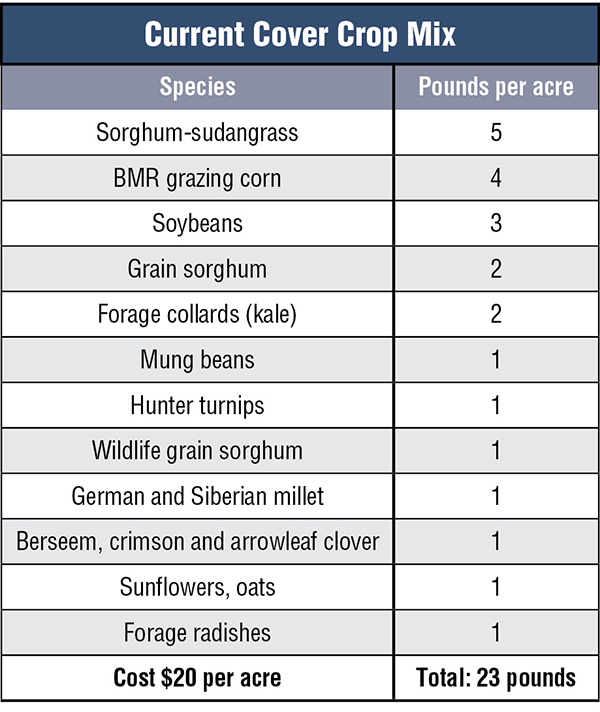
Jay Fuhrer, a renowned soil health expert, used our place as a living classroom, doing research and hosting tour groups. He was able to help me learn and move forward.
Cover crops weren’t new to us. We had started dabbling with a couple of species, gradually building up to very diverse cover crop mixes in an effort to bring back some diversity to our soils. We do full-season cover crops mixing up to 20 species.
For me, it just seems a bit too unpredictable to try and establish a cover crop after harvest in our area. There’s often not enough moisture to germinate the seeds and we get spotty results. Our first covers were a mix of sudangrass, oats and clover planted in late July. There wasn’t enough moisture and we didn’t get good emergence.
Now, cover crops are seeded in June with a John Deere 1590 no-till box drill. They grow all summer untouched and we turn cattle out to graze them in late November or December. On a typical year, we can graze them all winter without much, if any, supplementation.
The first year we grazed cows on cover crops we saw some very encouraging results. Jay had me do a Haney soil test — including a Phospholipid Fatty Acid (PLFA) soil analysis — following the year of cover crops and grazing. This PLFA analysis is an indirect measurement of microbial biomass in the soil.
It’s impossible to count the microbes themselves, but all living things are made up of fatty acids so they can be used as indicators. The lab extracts the fatty acids from the soil and measures the amount present. After one year, the soil test showed 1,500 nanograms of total microbial biomass. I had no idea what that truly meant, but it was a benchmark.
“No-till certainly put our soil on the right track, but cover crops and livestock have moved the mark most significantly…”
We decided to raise another cover crop and graze it on those same acres again. The next year the number doubled, which told me grazing livestock was moving us in the right direction with our soils.
Our cash crops benefited, too. Sunflowers were the first cash crop I planted after grazing cover crops. That year we raised 2,400-pound-per-acre sunflowers at 43% oil, which is the best sunflower crop I’ve ever made. The cherry on top is we grew that crop without applying any extra inputs.
Prior to planting, I split the field in half. On one side I did a traditional soil test. It called for quite a bit of N and P, which I applied.
On the second half I did the Haney test. This gives credit for organic NPK produced by the previous crop and thus made available by biological activity in the soil.
The Haney test called for virtually no extra inputs, so I didn’t apply any to the other half of the field. Jay did leaf analyses all season long and the unfertilized crop never showed any need for nutrients. At harvest, the yields were virtually identical.
These experiences have proven to me that while you can move soil health forward without livestock, you can get there a lot faster with livestock. Our goal is to have cover crops and grazing every 3rd year on any given acre. We’re a bit restricted on some of our acres due to not having developed water, but we’re slowly moving forward on more acres.
It seems to be worth the effort. We recently had one of our grazed cover crop fields test at 7,400 nanograms of microbial biomass, which was the highest number every recorded in the county. I’d say we’re on the right track.
Covers for Forage
When we started grazing cattle on cover crops, we shifted what we planted a bit. Achieving good forage value becomes more important when it’s not just about soil health.
For winter grazing, I like brown midrib grazing corn, which has a nice, high sugar content. We also use 2 or 3 kinds of millet, which the cows seem to like, and kale (also known as collards).
Kale is basically a cabbage without a head. It’s very leafy, comes on strong in late fall and stays green. It’s very tolerant of the cold. I’ve seen it green and growing under the snow in very cold temperatures.
We also include several legumes, such as clovers, cowpeas; and brassicas, such as turnips and radishes, to help scavenge nutrients produced.
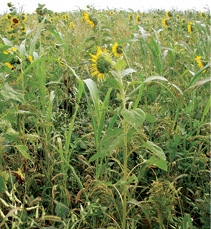
FEEDING THE STOCK. A mix of up to 20 species of cover crops is planted in June and allowed to grow all season. In winter, the carefully selected high forage value crops (such as BMR grazing corn) provide feed for the Doan’s 600-head commercial cattle herd. The roots and litter also help feed soil microbes and build soil organic matter.
Flexibility has been important in cover crops. I want to keep costs down. If the total cost of my standard mix is a lot higher one year, I’ll identify what seed is raising the cost and eliminate it. Last year it was cowpeas. I took them out and my mix was around $22 per acre, which is a great price.
The goal every year is to graze the cattle all winter without supplementing. With a good cover crop, I usually plan for 1 acre of cover crop per cow and provide them some corn stalks or additional pasture on the perimeter for cushion. At that rate they can go all winter.
We continue to be concerned about soil health, so the herd is rotated as needed to leave about half the forage. It’s a little hard to judge when you’ve reached half when the animals are digging it out of the snow, but we just make the call when it feels right.
While we want to do away with the feed bill entirely, the cows also need to remain in good condition for this practice to pay. Early on, I was especially concerned about getting them good forage as they entered their last trimester. To enable this, I’ll usually save back some good cover crop to rotate them onto as they enter that time of higher nutritional need.
I monitor nutrition throughout the winter, sending manure samples for testing. Rarely do they indicate I need to supplement. It is important to have a safety net, though.
We still maintain some perennial forage crops, but whereas we used to harvest 5,000 big round bales per year, now we harvest 600-800 bales per year.
They just sit in the hay yard as insurance. When a big blizzard hits, though, you absolutely must have that backup. We had four big blizzards last year and ended up feeding for about 2 months.
We continue to experiment to cut input costs. One venture we’re trying is planting perennial cover crops so we don’t have the seed and planting investments every year. Our hope is we can use these more durable covers to harvest some hay to keep on reserve for emergencies, but still get regrowth so we get grazing, too.
This year we planted a field with western wheatgrass, pubescent wheatgrass, a couple of clovers and cicer milkvetch. We’ll see what it does. We’re always a work in progress, looking for ways to cut costs and stay in business.
By grazing cover crops we’ve managed to save tremendous amounts of money in winter feeding and decrease spending on applied nutrients in the following cash crops thanks to improved soil health. Our yields have been fantastic and overall input costs are way down.
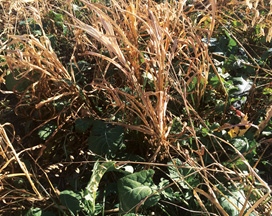
COLD WEATHER STAR. Kale is a valued plant in Doan’s forage mix. The leafy green comes on in late fall and stays green and growing when cold temperatures inhibit other crops. Doan has found it alive and well under snow cover and his cows love to graze it.
We’ve also been able to cut down on some of our herbicide applications as the litter and covers work to block weeds, but we haven’t eliminated them entirely. I’m looking forward to that day because the less herbicide I apply, the more money I save and the more I’m able to protect the soil life that is moving us forward.
It’s not just the soil and crops that have benefited. Our livestock are healthy and thriving and our practices have increased our wildlife populations.
This is great news as one of the many ways we’re diversifying is running Rolling Plains Adventures, a hunting and agritourism venture. Diversity isn’t just about plants, we have to diversify our income, too, to keep our ranch viable in the long run. Each time one of my kids have returned, they’ve had to develop a niche to help keep us profitable.
Profit in Change
One of the more frustrating things I’ve ever heard was a speaker who said, ‘We have learned to accept that we will not be profitable in the cattle business.’ Seriously? I don’t accept that. I love what I do, I think it’s a great lifestyle, but I think we can be profitable if we put our mind to it.
When I was first starting out, I went through Allan Savory’s holistic management program twice. It got me thinking about things using a bit more common sense. Instead of just doing things how they’d always been done, I started analyzing and changing things.
One of the principles they teach is to have as little capital and depreciable assets as you can. When we were struggling in the 1980s, like so many others, we embraced that thinking. We did the math and realized it didn’t make financial sense for us to own all of our combines and airseeders, so we started to contract that work out to other growers.
We do all the management, just not the actual process of seeding or harvesting. This can also be a challenge when we are trying to keep using the practices the way we want.
For instance, a lot of people are really into vertical tillage. They want to get out there and be doing something, knocking down corn stalks, stirring up the dirt a little. We have to work to shut them down.
Vertical tillage to smooth things up has its place, such as when you’re going into old CRP land for the first time. But, in a no-till cropping situation I think it’s about the worst thing you can do.
They say you’re only disturbing the top couple of inches, but that’s where all the biology is working. Disturbing them isn’t a good thing. I want my litter left in place and my soil biology undisturbed. The litter is keeping the moisture in place and giving you a chance in this climate to grow a crop.
This really struck me when Jay had another scientist in our field. She happened to have a soil thermometer. In our shoulder-high cover crop on a 95 F day, the soil was just 68 F.
Around 70 F is the ideal temperature for soil life to be active and at that temperature, all the moisture goes to the plant. As temperatures rise, you start losing moisture to evaporation.
If you would have stepped into a conventional field on that day where the sun was baking the soil I guarantee it would have been well over 100 F, dry and devoid of life.
These little moments of clarity help support the idea that we’re headed in the right direction.

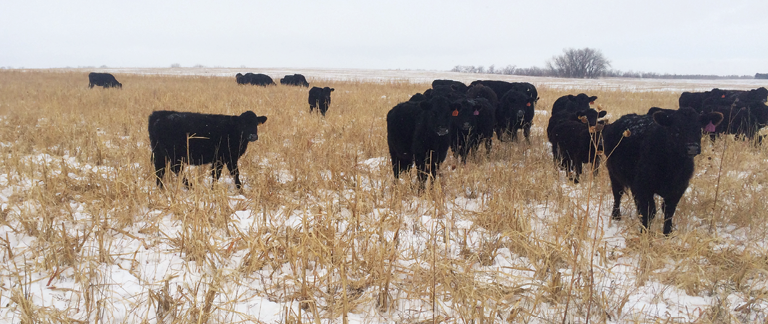
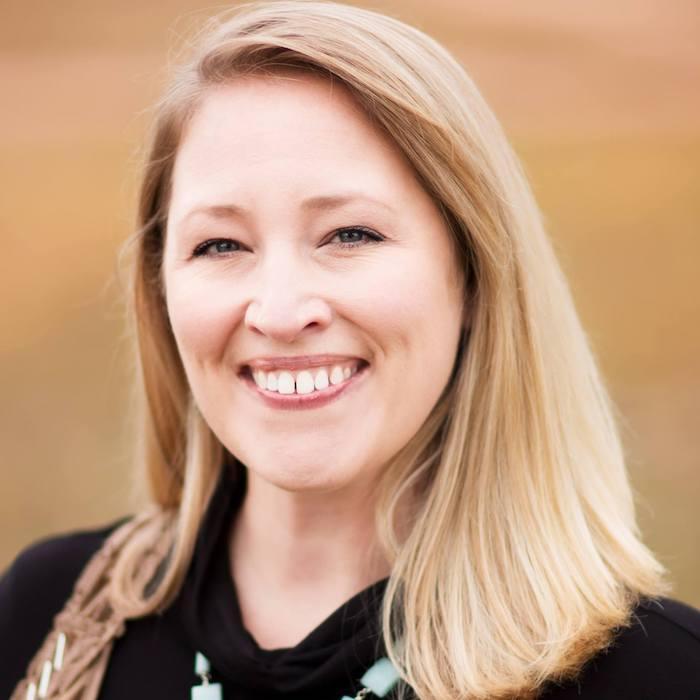





Post a comment
Report Abusive Comment